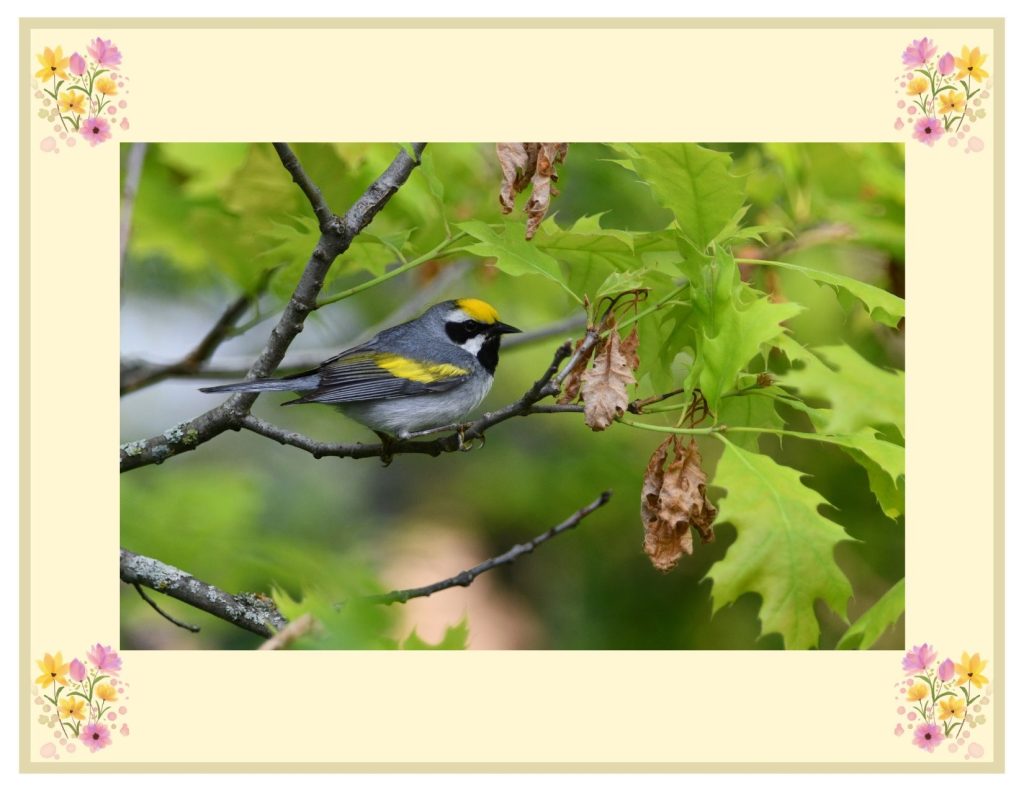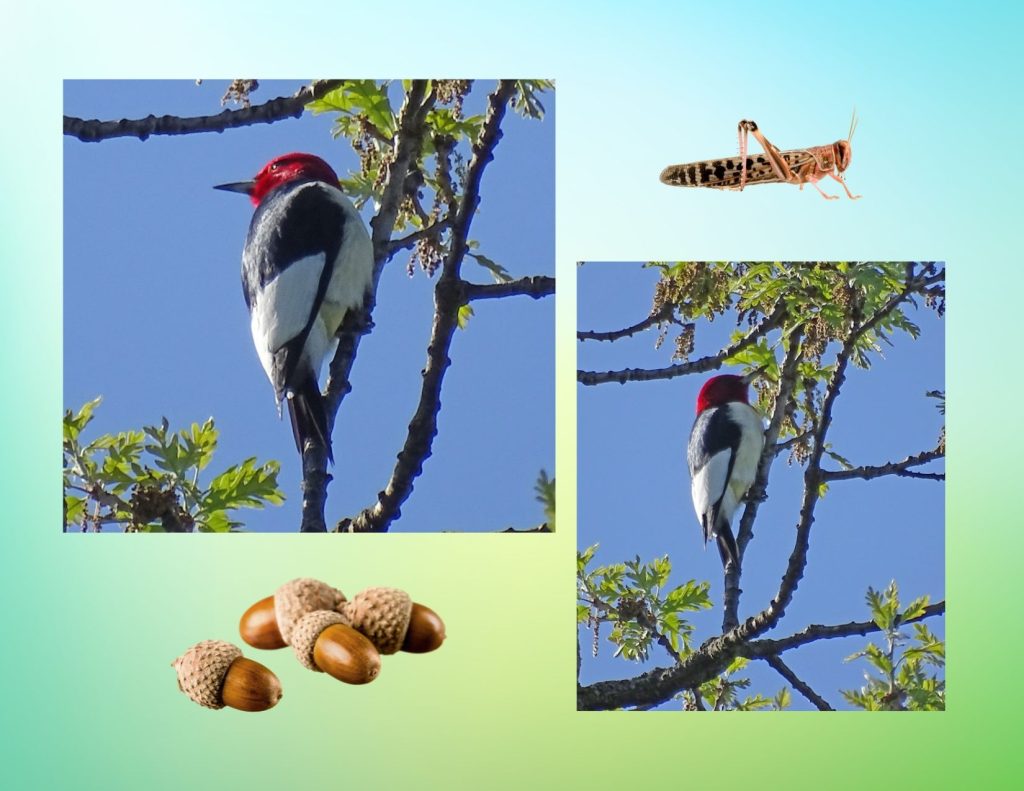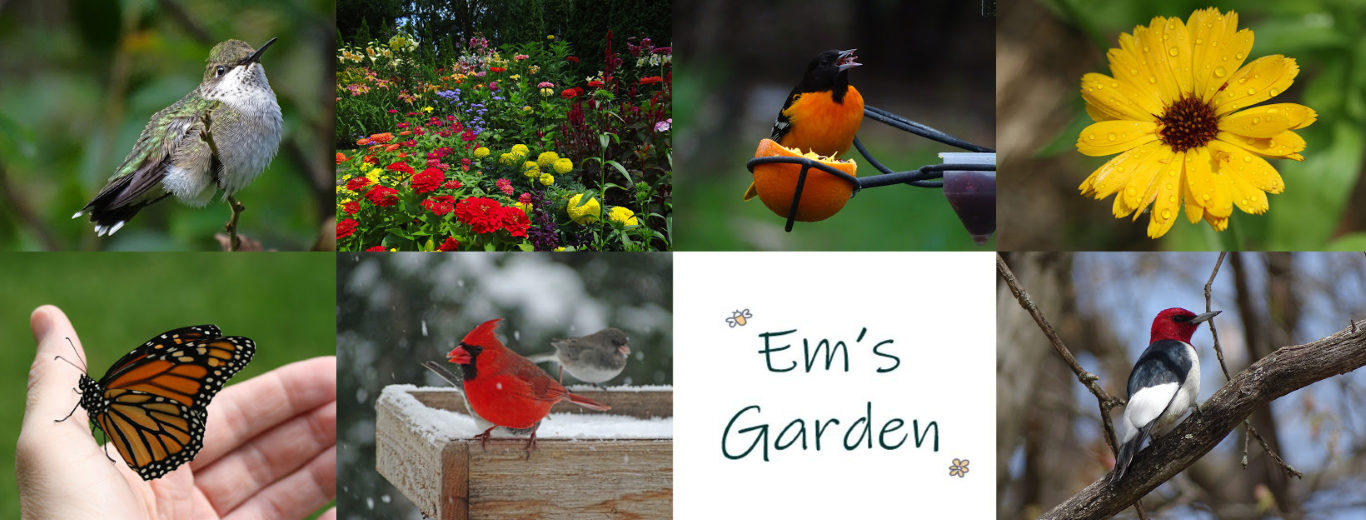Birders in this area are commenting about how strange this spring migration season has been. Usually the trees are dripping with beautiful wood warblers by early May, and many brightly-hued species like Baltimore Orioles, Rose-breasted Grosbeaks and Indigo Buntings may even show up in backyards for a few days thrilling homeowners who get to see them close up. Those birds arrive hungry and thirsty from their long journeys (often from Central or South America) and and spend a few days resting up before finishing the journey north into Canada or the Arctic depending on the species.

It was harder to find birds on the usual hiking trails this spring much less in my backyard, but I still managed to see my favorites—mostly with binoculars.
I got up early for a few days in a row in early May and sat on the garden bench with my Merlin app open. I’m pretty good at identifying bird calls, but because some of the migrating birds only come through twice a year (and usually only sing in the spring), my listening skills can get a little rusty. Merlin helps me find birds because it often hears them first.
One of my surprises this year was a beautiful Golden-winged Warbler. I noticed movement in a hedge and he just popped into view. These cute birds have a little patch of yellow on their heads and a black mask and throat. Then of course there’s the golden wing patch!

Unlike many of the other warbler species that like to hang out in the tops of deciduous trees, Golden-winged Warblers won’t give you a neck-ache. They forage close to the ground in shrubs and thickets looking for caterpillars, moths and spiders. I only saw this bird for a day, but a week later I could hear two Golden-winged Warblers singing throughout the day on our block.
Unfortunately, according to the Cornell Lab of Ornithology, “Golden-winged Warblers have declined sharply and now have one of the smallest populations of any bird not on the endangered species list. The North American Breeding Bird Survey estimates a decline of almost 2.5% per year between 1966 and 2014—amounting to an overall decline of 68%.” Thankfully there’s a group trying to reverse that trend.
The second surprise was a pair of Red-headed Woodpeckers. I haven’t seen this species in my yard in many years, and I’ve never seen two visit at once. They flew into the top of a 70-foot oak looking for insects while they cackled away.

They continued to forage in the top of that oak for about 10 minutes and then they were off. I haven’t seen them since, so I’m so glad that I decided to get up early to watch for birds or I might’ve missed them.
This species is also struggling. The Cornell Lab of Ornithology reports, “Red-headed Woodpeckers declined by over 1% per year from 1966 to 2019, resulting in a cumulative decline of 54%, according to the North American Breeding Bird Survey. Partners in Flight estimates a global breeding population of 1.8 million and rates them 13 out of 20 on the Continental Concern Score and has included them on the Yellow Watch List for species that require constant monitoring and long-term assessment to prevent further declines.”
While I didn’t see the usual cast of characters in my backyard this spring, I’m thankful I was able to see these two beautiful (disappearing) bird species.
